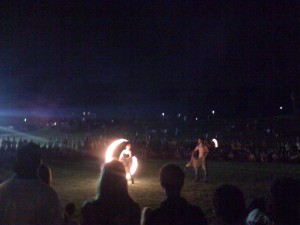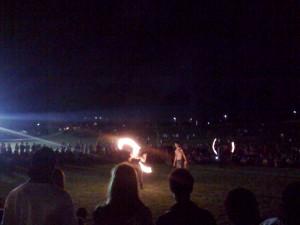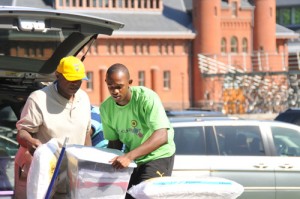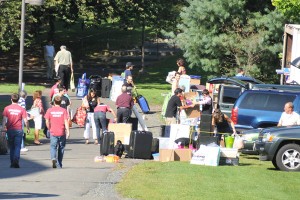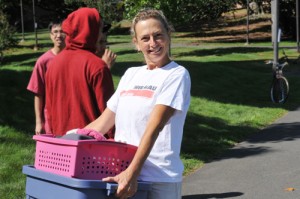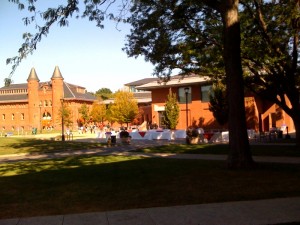At Wesleyan we often talk about our great tradition of honoring service in the community. Civic engagement has long been a hallmark of the educational experience here, and it provides the basis for lifelong participation in the public sphere to make a positive contribution to one’s neighborhood, city, and country.
Yesterday, I attended the Middlesex Chamber of Commerce’s annual Support the Troops breakfast. During the week in which Veterans Day falls, the Chamber honors our active duty men and women, as well as those who have served in years past in the Army, Navy, Air Force, Marine Corps, Coast Guard and National Guard. There is always a great turnout for this event, a chance to say “thank you” for those who have put themselves in harm’s way to serve our country.
Yesterday’s breakfast was especially noteworthy for two reasons. First, in addition to the regular Wes contingent at Chamber breakfasts, we welcomed students who were either veterans or are now part of a joint ROTC program. Wesleyan has been fortunate to have received some very generous gifts for scholarships for veterans, and it was great to have the current recipients join us for this event.
The second reason yesterday’s event was noteworthy is a much sadder one. Our flag on campus flew at half-staff this past weekend in recognition of the fallen soldiers at Fort Hood. The murders at the Texas army base are a grim reminder of the risks our soldiers face every day. Whatever one’s views on American foreign policy and military strategy, I trust we can acknowledge with gratitude the service our troops have performed in contexts of great danger.
[tags]civic engagement, veterans, Middlesex Chamber of Commerce, Support the Troops, mourning, Fort Hood, foreign service[/tags]



